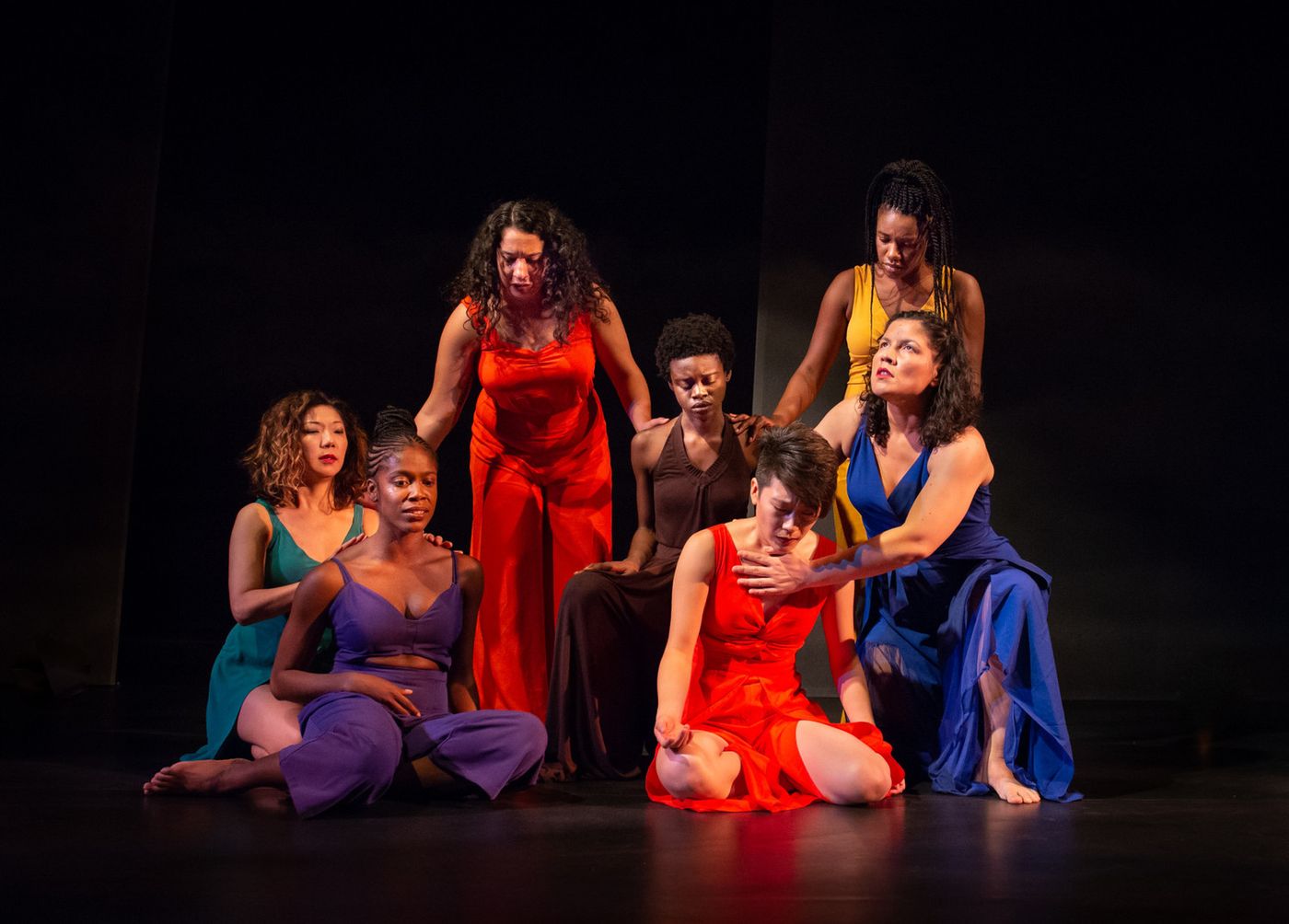Review: FOR COLORED GIRLS WHO HAVE CONSIDERED SUICIDE / WHEN THE RAINBOW IS ENUF at Penumbra Theatre

In keeping with their tradition of honoring the ancestors and artistic leaders of past generations, Penumbra Theatre is opening this season by revisiting Ntozake Shange's groundbreaking iconoclastic work, for colored girls who have considered suicide / when the rainbow is enuf, which won an Obie in 1976 for its Broadway run, which I saw. Let's pause to note that it was the first Broadway show written by a Black woman since Lorraine Hansberry's RAISIN IN THE SUN in 1959.
As the spelling and lower case letters signal, Shange was deliberately experimenting with alternative structures in this performance text. Then and now, she calls it a 'choreopoem', not a play, meaning that it is a loosely connected set of 20 spoken pieces, some quite poetic, some more narrative, that are meant to be performed by an ensemble with movement and music. No intermission and no rising and falling action or denouement are provided. Rather the whole is meant to read as a ritual, designed to welcome girls of color into their womanhood, both celebrating their gifts and alerting them to potential sorrows.
The Penumbra production spans 90 minutes and is co-directed by the father/daughter team of Lou and Sarah Bellamy, and features choreography by Ananya Chatterjee, who leads a Twin Cities professional dance company dedicated to social justice work. Framed with a prologue by three local girls of color, dressed as they might be for school today, the piece ends with the same three, now dressed in solid color jumpsuits as they stand at the center of a spiraling blessing delivered by the seven women of the cast.
This cast embodies diversity within the community of women of color, including women who are Black American, Latina American, and Asian American. Each wears a different color, so that together they represent the rainbow-recalling the symbolic covenant in the Old Testament after the Flood, when God promises that there shall be no more catastrophic killing event threatening humankind. These colors are also identified with various Orisha, powerful spirit emissaries grounded in African spiritual traditions. Thus it is the sisterhood of women of color that creates the possibility of surviving the woes of the world.
All seven women performers bring passion to their performances. To my eye, two in particular stand out for their ability to connect directly to the audience, beyond performing for us. They are Sun Mee Chomet, as the Lady in Green, and Ashe Jaafaru, as the Lady in Brown. The rest of the ensemble lift the language up so that every word can be heard, and transition readily from lead speaker to supporting actor as needed. They are Cristina Florencia Castro, Khanisha Foster, Audrey Park, Rajané Katurah Brown, and Am'Ber Montgomery.
More incantatory than narrative, this text celebrates sexuality and also includes grim tales of relationship violence and abuse. It is deliberately not linear, but rather intends to engulf the audience in rich language, vivid color, and undulating dance. The Penumbra production succeeds in doing all this, certainly. The movement ranges from exuberant to languorous to overtly sexual. Occasionally the women use their bodies to create strong images; my favorite was the waters in a healing bath.
I think it fair to say that the model Shange provided broke open the confining traditions of mainstream American playwriting. Without it, Ensler's VAGINA MONOLOGUES (which would premiere 20 years later) is harder to imagine. The sensibility of the two writers is quite different: Shange is more poetic and spiritual; Ensler more documentarian and activist. But both writers are survivors of trauma who use art as a mode of healing personal and societal wounds. Each crafted a lasting work where ensembles of female performers break taboos to voice the internal experiences of women in revolutionary ways.
As always, Penumbra supplies a study guide (here, 80 pages of useful material) to provide context for the show. Parents need to judge how old their children should to be to see this show and make sense of it; the answer might differ dramatically family to family. Certainly it is true that resurrecting this text is the latest gift to the community that Penumbra labors to serve. The show runs through October 14.
Photo credit: Allen Weeks
Reader Reviews
Videos

